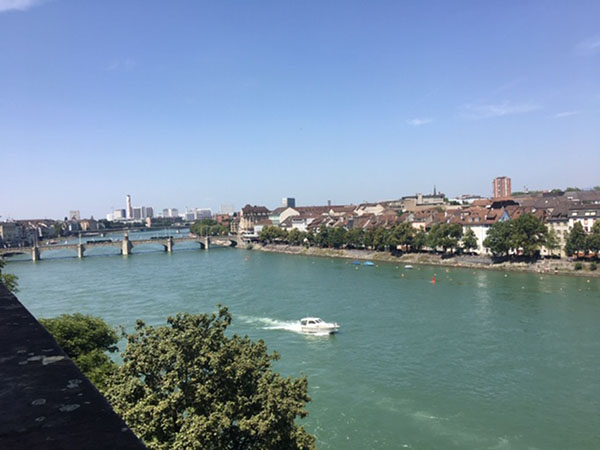 Recently, I had the pleasure of visiting Basel, Switzerland. Basel is a beautiful city on the banks of the Rhine, with houses and buildings dating back to the 1600s. There are many museums there, including art museums, a toy museum, a caricature and cartoon museum, and a music museum.
Recently, I had the pleasure of visiting Basel, Switzerland. Basel is a beautiful city on the banks of the Rhine, with houses and buildings dating back to the 1600s. There are many museums there, including art museums, a toy museum, a caricature and cartoon museum, and a music museum. 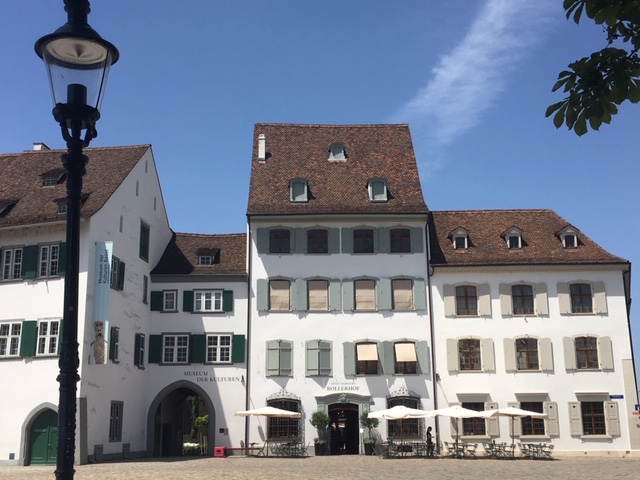
My husband and I were visiting friends, but I couldn’t resist going to the Basel Papermill. This wonderful mill/museum produces and sells paper and paper products and print services, while operating as a museum.
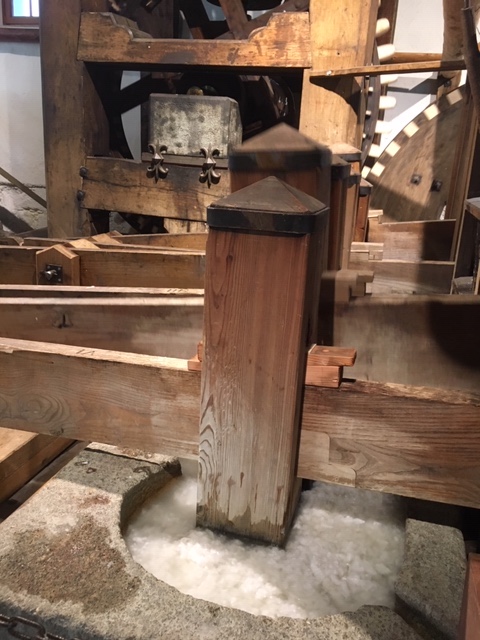 On the first floor, visitors are able to not only view paper being made, but try their hand at it also. The photo on the left shows a mixture of pulp and water being mashed together while the one on the right shows the back end of the machinery.
On the first floor, visitors are able to not only view paper being made, but try their hand at it also. The photo on the left shows a mixture of pulp and water being mashed together while the one on the right shows the back end of the machinery. 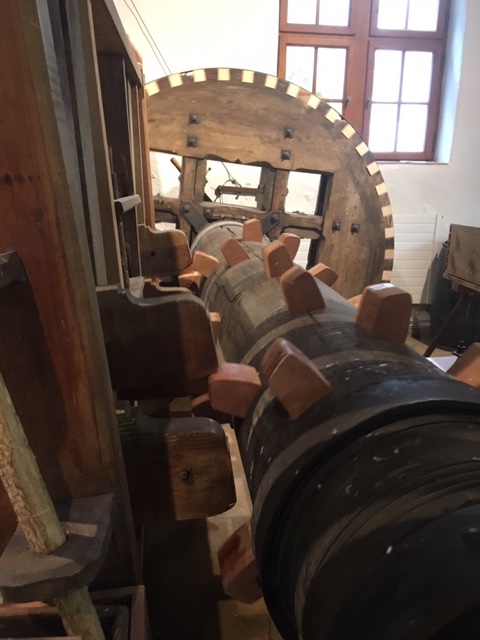
Watch and listen to the video below, showing the entire machinery mashing the pulp to prepare to make the paper. I love the sound!
Upstairs, there is a full letterpress print shop, including the original Heidelberg press shown here. 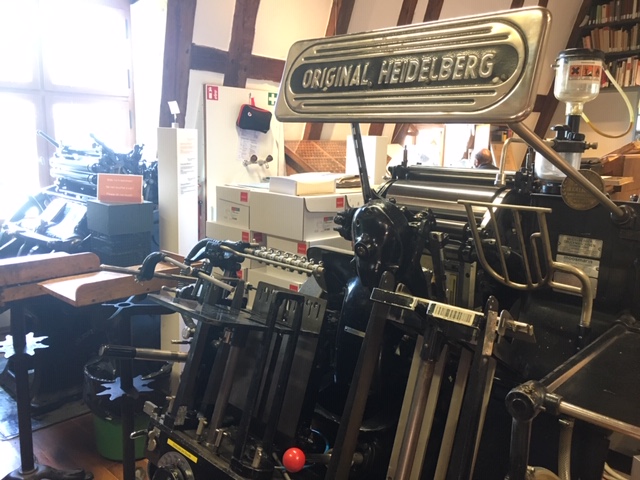 And, of course, it was thrilling to find bookplates amongst the print samples in the shop, The bookplate shown below is one I’d seen online.
And, of course, it was thrilling to find bookplates amongst the print samples in the shop, The bookplate shown below is one I’d seen online. 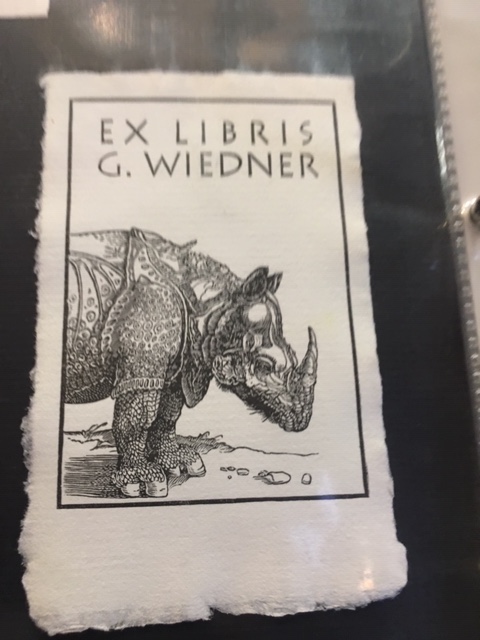
This is only a snippet of the many interesting experiences and information in the paper mill/museum. If you are ever in Basel, don’t miss it!
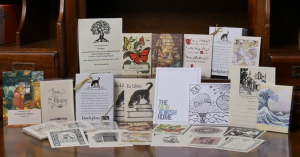
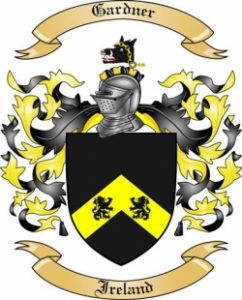 The traditional use of bookplates, begun in the 15th century, is to identify the owner of a book. Bookplates, also known as ex libris, are usually decorative, with artwork that is meaningful to the book owner. Often they show the family coat of arms or some particular area of interest to the owner. Many well-known figures have used bookplates and many well-known artists have created them over the years, but they are available for anyone to use.
The traditional use of bookplates, begun in the 15th century, is to identify the owner of a book. Bookplates, also known as ex libris, are usually decorative, with artwork that is meaningful to the book owner. Often they show the family coat of arms or some particular area of interest to the owner. Many well-known figures have used bookplates and many well-known artists have created them over the years, but they are available for anyone to use.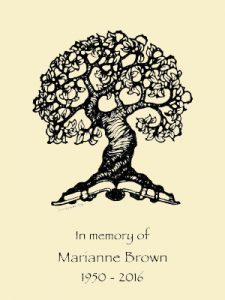 iven in memory of a favorite teacher or librarian.
iven in memory of a favorite teacher or librarian.

 This past August, my husband and I had the good fortune to travel to Europe. We spent a week in Lucerne, Switzerland, attending spectaular concerts at the renowned Lucerne Music Festival and hiking in the Alps with friends. After traveling by train to Italy, we visited Lucca, Florence and Cinque Terra, walking for miles, and loving the history and beauty of the area.
This past August, my husband and I had the good fortune to travel to Europe. We spent a week in Lucerne, Switzerland, attending spectaular concerts at the renowned Lucerne Music Festival and hiking in the Alps with friends. After traveling by train to Italy, we visited Lucca, Florence and Cinque Terra, walking for miles, and loving the history and beauty of the area. Within the museum is the Pisani Library, a room filled with beautiful walnut bookcases that came from the Pisani family palace at San Vidal. The Pisanis, an aristocratic family in Venice from the 12th to 18th centuries, were an important influence on the culture and politics of the time. According to the Museo Correr, they were “the first to set up what might be called a library-museum, in an attempt to endow the city’s publishing industry with its own aura of grandeur and munificent service to the State.”
Within the museum is the Pisani Library, a room filled with beautiful walnut bookcases that came from the Pisani family palace at San Vidal. The Pisanis, an aristocratic family in Venice from the 12th to 18th centuries, were an important influence on the culture and politics of the time. According to the Museo Correr, they were “the first to set up what might be called a library-museum, in an attempt to endow the city’s publishing industry with its own aura of grandeur and munificent service to the State.” Eighteenth.” Surrounding the shelves are display cases with beautiful books from the 1500-1600s.
Eighteenth.” Surrounding the shelves are display cases with beautiful books from the 1500-1600s. fear of fire within the city and its wood buildings.
fear of fire within the city and its wood buildings.